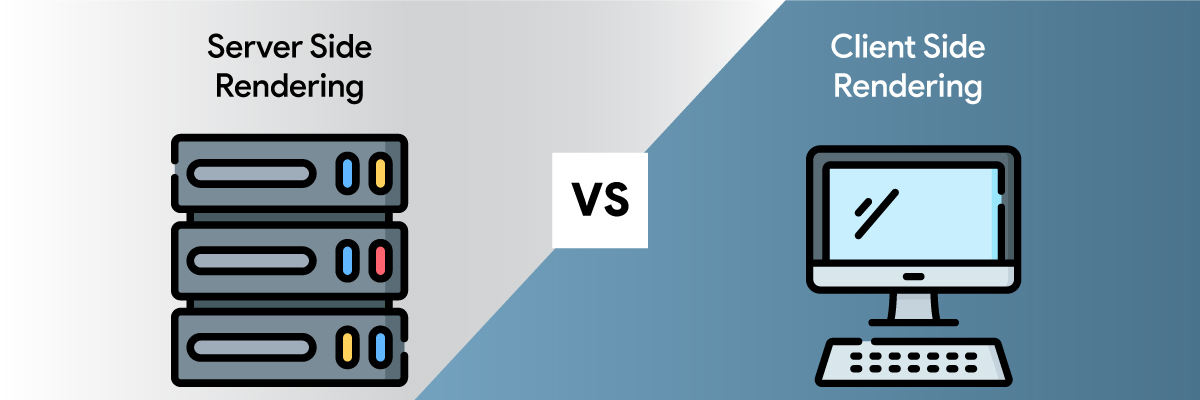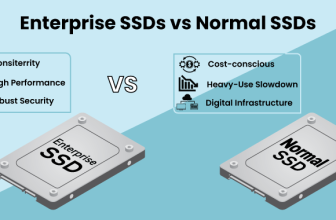Server Side Rendering vs Client Side Rendering: Key Deffereances

Web development has gained crucial importance in the digital age. To form an impressionistic impact on the end users, the stakeholders need to optimize their web development scenarios. The elevation of the website performance, visibility, and user experience largely depends on opting for the right rendering technique. The two most popular approaches for web development include Server-Side Rendering (SSR) and Client-Side Rendering (CSR).
- This article will help you navigate through the intricacies of both SSR and CSR, enabling you to make a suitable choice for your end requirements.
What is Server-Side Rendering (SSR)?
Server-side rendering (SSR) is used for rendering the HTML page in its entirety on the server. On requesting a page, the server brings together data to form the comprehensive HTML content, fully populated with the necessary data. It then sends it to the client side to display on the browser. It uses frameworks like Next.js and Nuxt.js.
There are various peak benefits of deploying SSR. SSR boosts search engine optimization (SEO) as it provides the search engine crawlers with fully rendered HTML. The search engine crawlers can smoothly parse it. It is well-indexed for higher ranking on the SERPs. You can enjoy a faster initial load time for a flawless user experience. For websites that include static content such as blogs that prioritize SEO and stability over other factors, SSR becomes very helpful.
What is Client-side Rendering (CSR)?
Client-side Rendering is another rendering technique. In this, the browser receives a basic HTML file with minimal content from the server. After this, it executes a JavaScript code to fetch additional data and render the complete UI. The CSR makes use of frameworks like React, Vue.js, and Angular.
When it comes to CSR, this rendering technique finds high applicability for complex websites that include dynamic content and face high traffic. Even for data-intensive applications that demand frequent user interactions, CSR is an ideal solution. It is because it facilitates faster website interactivity without needing the full page reloads.
Detailed Comparison of SSR & CSR
Rendering Process and Initial Load Times
SSR generates HTML on the server and sends it to the client. However, CSR requires minimal HTML content. It downloads the content on the server and sends it to the client. The JavaScript handles the rendering in the CSR. While SSR has faster initial load times as it sends fully rendered HTML to the client, CSR has shorter initial loads. It is due to the elongated process in which the browser will first download the required JS code to render the page and then execute it.
SEO Performance
Server-side rendering is more SEO-friendly. It allows the search engine to easily crawl through the pre-rendered HTML and index it for ranking on search engine results pages (SERPs). On the other hand, in CSR the initial HTML files are minimal. Hence, the search engines face difficulty in crawling and indexing. It struggles to interpret JS-rendered content, which significantly brings down the discoverability.
Interactivity
The user interfaces of CSR are highly interactive. However, SSR can delay interactivity because of server communication. CSR is well-suited for platforms that require high interactivity levels and real-time updates like social media platforms and collaborative tools. It offers better adaptability to dynamic content. For SSR, the UI update may require a round-about trip with the server which delays the interaction.
Server Load
The server load is more dense on SSR. This is because it handles the rendering on the server for each request. As CSR handles the rendering on the client’s server, it significantly reduces the server load.
Suitability
While SSR is suitable for content-heavy websites that do not have dynamic content, you can leverage CSR for more dynamic web apps. Hence apps featuring complex UI and requiring frequent updates can use CSR. It also allows you to create rich UIs and single-page applications (SPAs) enabling you to update content without the full page reloads.
HTTP Requests and JavaScript Dependency
CSR makes fewer HTTP requests as compared to SSR. However, CSR is heavily dependent on JavaScript. SSR can function even without enabling JS to provide the basic functionalities.
Conclusion
Summarizing the above content, it becomes evident the SSR is SEO-friendly, with faster initial load times. Hence, content-heavy websites requiring less interactivity can be used. CSR offers faster rendering, and it has more amplified user interactivity. It also enables reduced server load, which makes it suitable for dynamic web apps and complex UI.
The choice between SSR and CSR largely depends on the individual requirements of your web project. It depends on factors such as the website’s complexity, traffic levels, and also your SEO priorities. You need to navigate through the functionalities and features of each to make your decisions. It will help you make the right impression on the end users and boost your website performance.







